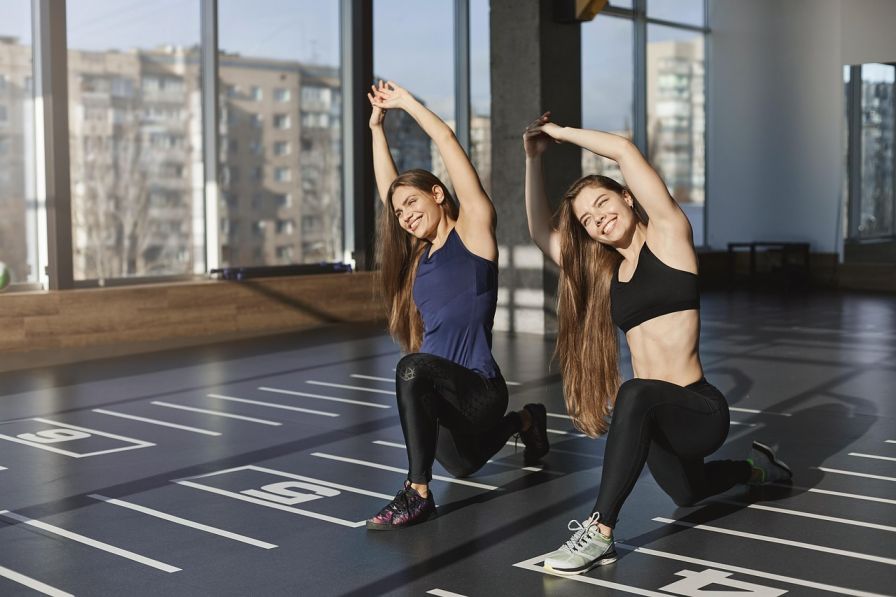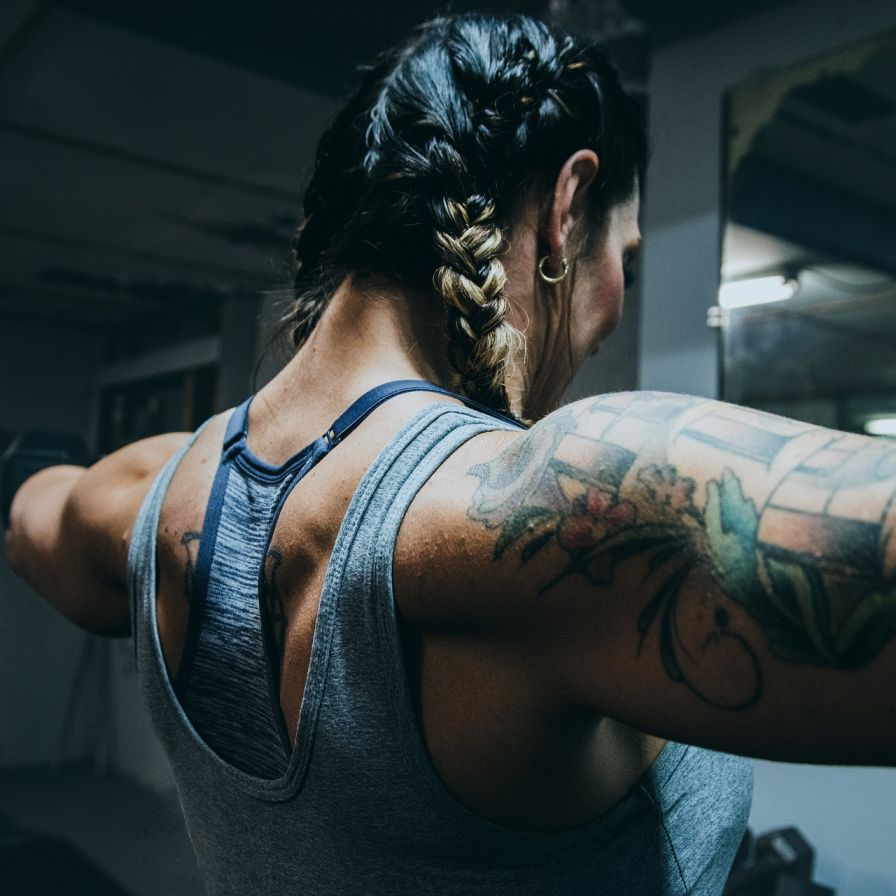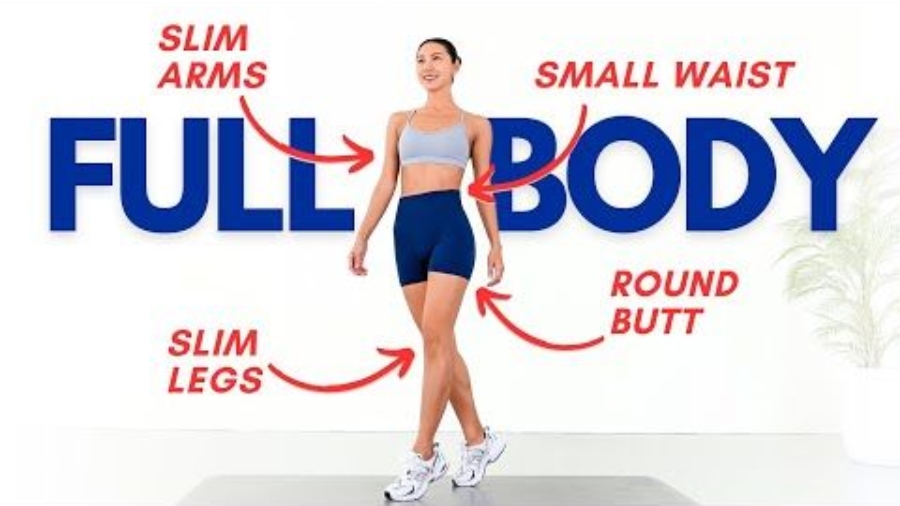“Discover effective full body workout at home routines for beginners. No equipment needed—just results, motivation, and practical guidance.”
Introduction
Feeling squeezed for time but still want to get fit? A full body workout at home might be the perfect solution.
These routines use simple bodyweight moves to target every muscle group without requiring gym machines or heavy weights.
Busy beginners can benefit especially, since Harvard Health notes you can exercise “anywhere, anytime” with just your body.
In short, even a tiny patch of floor or your living room is enough to start getting results.
For more ideas on exercises and staying motivated, check out our [Top Bodyweight Exercises] and [Fitness Tips for Beginners] posts.

Starting small pays off. Imagine fitting a quick, effective circuit into your lunch break or morning routine.
Even the simplest move—like a forward lunge (pictured)—fires up your muscles and gets your heart pumping.
Taking 5–10 minutes to warm up (jumping jacks, arm swings, gentle squats) raises your body temperature and primes your joints.
From there, you can launch into a powerful full-body session.
In fact, Mayo Clinic recommends a brief warm-up before strength training, since “cold muscles are more prone to injury”.
This practical approach—no fancy gear, just you and your body—sets the stage for consistent progress with a full body workout at home.
Why Full Body Workouts Work
Full-body workout at home routines train all major muscle groups in one session, making workouts highly efficient. Your muscles work together as a team, improving overall strength and coordination.
Harvard Health points out that bodyweight exercises are very functional: they use “multiple muscles and joints at a time, engaging balance, and mimicking everyday activities”.
For example, a move like a burpee or mountain-climber involves legs, core, and upper body all at once.
That means you build practical strength and burn more calories per minute than if you isolated just one muscle.
Moreover, research confirms that full-body training is at least as effective as split routines for strength gains.

A 2022 study found “no benefits for split-body… compared to full-body workout at home” training in terms of muscle strength and mass. In other words, training everything together is just as good for getting stronger.
Compound movements boost calorie burn. When you alternate between upper- and lower-body exercises (a classic full-body circuit), you challenge both your anaerobic and aerobic energy systems.
This creates a pronounced “afterburn” effect. In fact, exercise scientists report that resistance circuits produce a larger post-exercise oxygen consumption than steady jogging.
Translated, that means your metabolism stays revved up longer after a full-body session.
To quote one review, heavy resistance work generated the biggest extra calorie burn compared to steady cardio.
In practice, this means a quick bodyweight HIIT session at home can keep you burning calories even while you relax afterward.
Best of all, you don’t need to spend hours. ACE Fitness emphasizes that consistency matters more than duration: “Whether you have 5, 15, or 30 minutes, each timeframe is sufficient for a solo sweat session.”
Time-crunched beginners get results too.
A Harvard study found that just 10 weeks of body-weight training improved aerobic fitness by 33% and significantly increased core strength and flexibility.
ACE Fitness also notes that progressive bodyweight workouts (even knee push-ups to regular push-ups) will improve overall fitness, as long as you stay consistent. The takeaway?
A short daily routine can dramatically boost your health.
Combined with the convenience factor – you can start any time, any place – full-body workouts at home are perfect for busy lifestyles.
The key is keeping at it regularly: small steps add up to big changes.
Best At-Home Full Body Workout Routines
A good full-body workout at home flows smoothly through warm-up, main exercises, and cool-down. Here are the essentials:
- Warm-Up: 5 to 10 minutes perhaps: Begin with light cardio, marching in place, jumping jacks, or jogging where you are; add dynamic stretches like arm circles and hip swings to loosen muscles. As Mayo Clinic advises a proper warm-up—even just a brisk walk or cycling—prepares your body and helps prevent injury.
- Push Exercises /Upper Body: Work your chest, shoulders, and triceps with moves like push-ups (perform on knees or against a wall if needed). Aim for 2–3 sets of 8–12 reps; you can vary width (wide push-up diamond push-up) to target different muscles. Chair dips or wall push-ups are also great no-equipment options strengthening your arms and shoulders.
- Pull/Back Exercises: Even without a pull-up bar, you can hit your back. Try the “reverse plank” (sit on floor, lift hips while supporting on hands) or Superman raises (lie face down, lift chest and legs). If you have a sturdy table or counter, low body rows (grip the edge and pull your chest up) can mimic a pull-up. The goal is to balance your pressing moves by engaging your posterior chain.
- Core Moves: Plank and its variations truly are the foundation: hold a forearm or straight-arm plank for 20–60 seconds focusing on hips staying level. You can add bicycle crunches (15 reps per side) or leg raises (10–15 reps) to challenge different abdominal muscles. Mountain climbers (in plank bringing knees to chest rapidly) also raise your heart rate while strengthening abs. Two to three core exercises of 2–3 sets each will tighten and stabilize your midsection.
- Leg exercises like squats and lunges are truly foundational for the entire body! You can do bodyweight squats (remember, hips back knees over toes) for 10–15 reps or maybe stationary or walking lunges (about 10 reps for each leg).
- Want to really target your glutes? Adding glute bridges (lifting those hips right off the floor) or even wall-sit holds works well. Calf raises (just standing up onto your toes) are key for strengthening the lower legs too. These moves engage big muscles so its important to focus on form: keep knees aligned and that back straight. Building lower-body strength takes repetition like 2–3 sets of each exercise.
- Full-Body Moves: Finish circuits with any total-body exercises you like. Burpees (squat, plank, jump) and jumping lunges are intensive options.
- They spike heart rate and work almost every muscle. Even one minute of burpees, followed by rest, can be a powerful finisher.
- Cool-Down (5–10 min): Always end with gentle stretches to relax muscles. Focus on major areas like hamstrings, chest and shoulders. ACE Fitness stresses the importance of lowering your heart rate and stretching after workouts.
- For example, hold a quad stretch, calf stretch, seated hamstring stretch, and a shoulder/triceps stretch for 15–30 seconds each. This helps flexibility and recovery.
For exercise ideas, see our [Top Bodyweight Exercises] guide.
Also, consider an infographic of “Top 5 Bodyweight Moves for Full-Body workout at home Strength” to review the best basics (for example: squat, push-up, lunge, plank, and burpee).
Visual guides can be very motivating.
Beginner-Friendly 7-Day Workout Plan
Below is a sample week balancing effort and recovery. It alternates focused workout days with lighter active or rest days, as experts recommend:
| Day | Workout Plan |
|---|---|
| Monday | Full-Body Strength: Circuit of bodyweight squats, push-ups, lunges and planks (2–3 sets of each). |
| Tuesday | Active Recovery: Light yoga, stretching or a brisk 20–30 min walk to loosen up and aid recovery. |
| Wednesday | Cardio & Core: 15–20 min full-body HIIT (e.g., jumping jacks, mountain climbers, burpees) plus core exercises (plank, crunches). |
| Thursday | Rest: Complete rest or very gentle stretching (focus on breathing and mobility). |
| Friday | Full-Body Strength: Repeat Monday’s circuit or try variations (e.g., different lunge or push-up style). |
| Saturday | Fun Cardio: Go for a bike ride, hike, or play an active sport with family/friends. (Keep it enjoyable!) |
| Sunday | Rest & Recovery: Take it easy – focus on hydration, light stretching, and sleep to let muscles recover. |
This plan builds in recovery days deliberately. Mayo Clinic advises giving muscles a day off between tough workouts.
This allows for rebuilding strength. By alternating training with rest or low-intensity activity, individuals avoid burnout and assist the body in adapting.
Over time, it is possible to adjust this plan (adding more intensity or exercises) as personal strength grows.
Common Mistakes to Avoid
Good form and recovery are key. Here are mistakes beginners often make, and how to steer clear of them:
- All-or-nothing mentality: Thinking “I have to exercise a full hour” or “I missed today, so might as well skip.” Don’t buy that myth. Even a 10-minute workout counts. ACE Fitness notes that “if you have 10 minutes to check social media, you have 10 minutes to get in a quick…body-weight workout.”. A short workout is better than none.
- Skipping warm-ups: Jumping into strenuous moves with cold muscles invites injury. As mentioned, warm up first. Skipping it can lead to strains or knee issues. For example, ACE warns against letting knees shoot past toes in a squat (bad form causes undue stress). Always prep your muscles with a light jog or dynamic stretch to protect your joints.
- Poor technique: Rushing reps or using momentum often causes problems. Mayo Clinic emphasizes using proper form to avoid injury. Keep your spine neutral in planks and squat hips back. Quality over quantity – it’s better to do fewer reps correctly than more reps sloppily.
- Overdoing it: Doing too much, too fast is a quick path to pain. ACE highlights that exercising “too much, too hard or too often” is a common misstep. Your muscles need rest days to grow; overtraining can lead to fatigue or injury. Stick to the plan’s rest days and scale up intensity gradually.
- Skipping cool-down: After a great workout, don’t sprint to the shower immediately. Take a few minutes to stretch and lower your heart rate. ACE notes that a proper cool-down improves flexibility and helps set you up for your next workout. Even gentle yoga poses or walking will help flush out soreness.
- Unrealistic goals: Setting too-ambitious targets can derail you. ACE advises setting “specific and appropriate” goals – for instance, aiming to add one more push-up per week, rather than “bench press 100 lbs in a month.” Make goals that match your current level to stay motivated and avoid frustration.
- Inconsistency: Skipping workouts erratically means slow progress. It’s better to do a little and stick with it than go all-out intermittently. Even busy people can commit to three 20-minute sessions a week and see gains. The key is making fitness a regular habit. (Many people find success by scheduling it like any other important task in their calendar.)
Avoid these pitfalls and your full-body workouts at home will be safe and effective. Remember, everyone starts somewhere – focus on consistency, not perfection.
Adapting Workouts to Fit Your Life
No two schedules are the same. The beauty of home workouts is flexibility. Here are tips for making them work for your life:
- Micro-workouts: Don’t have time for a long gym session? Aim for short 10–15 minute circuits. Healthline points out that even a brief bodyweight workout can maintain muscle tone and metabolism. Try doing squats during TV commercials or a quick set of push-ups before showering. These mini-sessions add up over the week.
- Active breaks: Use spare moments to move. If you’re working at a desk, stand and stretch or do calf raises every 30 minutes. Healthline suggests doing simple exercises like stretching or squats during breaks. Even a one-minute walk around the house or stair climb between meetings can break the sedentary routine. These little bursts keep you energized.
- Family time = fitness time: Turn playtime into exercise. Go for a family bike ride, play catch, or dance with your kids. According to experts, involving loved ones lets you stay active without “carving out separate” gym time. Your kids will love it, and you’ll sneak in extra steps and movement effortlessly.
- Flexible scheduling: Work out whenever it fits your routine. Early bird? Do your workout before work. Late evenings? Squeeze it in after dinner. Online fitness classes and video tutorials (even on YouTube) let you follow a trainer at home on your own timetable. You have the freedom – use it!
- Anywhere, any equipment: Your bodyweight is portable. Harvard Health reminds us that “no matter where you are, you’ve got your body”. A small living room corner or hallway is enough space. Use furniture if needed (a chair for triceps dips, a railing for incline push-ups). Even a wall works for standing push-ups or wall sits. No gym? No problem.
- Mindful movement: Incorporate fitness into daily chores. Do squats while folding laundry, calf raises while brushing teeth, or hold a plank while you read emails. Every bit of movement helps. Over time, these habits improve posture, strength and flexibility with zero extra time needed.
By getting creative and flexible, a full body workout at home becomes a natural part of your day – even for busy parents or remote workers. The key is to start small, use what you have, and build up gradually.
Real-World Success Stories
Building a home workout habit often starts with one small change – and that leads to big results.
Consider this example: a busy working mom began her journey doing just 5 push-ups and 10 bodyweight squats each morning.
It wasn’t much, but she treated it like her “me time.” Each week she added one more push-up or held her plank 10 seconds longer.
In a few months, those mini-sessions became a solid 20-minute routine she loved. Today she says this “10-minute rule” (as ACE Fitness calls it) was a game changer.
Another reader, a remote programmer, fought chronic back pain by sneaking exercise into his day. He did desk lunges during work breaks and three sets of planks while on conference calls.
At first it felt awkward, but the consistent effort paid off. In 8 weeks, he noticed better posture and less discomfort. He attributes the change to consistency over perfection.
This mirrors what Mayo Clinic advises: regular effort with proper form is key.
These stories highlight that success can start with just a few reps, not hours in the gym.
The common thread? Both stuck with it. As one enthusiast put it, “I can always find 10 minutes for myself.”
This mindset – finding a little time and committing to it – is exactly what ACE Fitness and other experts promote.
You might also think of your own scenario: maybe doing lunges during the kids’ cartoon, or squats before your morning coffee.
With each small step, you build confidence. Soon, these become habits and you’ll find yourself eagerly awaiting your quick home workout.
Conclusion
Getting a full-body workout at home is completely doable, even for beginners and busy people. By focusing on compound bodyweight moves and short circuits, you can build strength, burn fat, and boost endurance – no equipment required.
The science supports it: bodyweight training improves fitness in many ways, and experts agree that even brief, consistent sessions are effective. The biggest payoff is convenience and consistency.
You have everything you need at home: your own body and a bit of determination.
Stay patient and keep going. Remember the big mistakes to avoid (skip the warm-up, use bad form, or do too much too soon) and focus on the positive steps you can take each day.
Before you know it, you’ll look back amazed at how far you’ve come. A full body workout at home could be the best habit you ever develop.
Ready to Get Started?
Are you excited to try these full body workouts? In a world buzzing with activity, finding time for fitness often seems like a challenge.
Yet carving out moments for movement brings rewards far beyond physical health; it boosts energy levels and clears the mind – making every day feel more manageable.
Share your own plans or_tF your tips – we’d love hearing how you weave fitness into your busy schedule
If this guide helped you, subscribe for more tips and motivation.
And don’t forget to check out related content like [Top Bodyweight Exercises] and [Fitness Tips for Beginners] for more routines and advice on getting started.
You now possess the tools and knowledge necessary; all that remains is taking that first step, turning fitness into a seamless part of how you live.
Let’s get moving – together!

